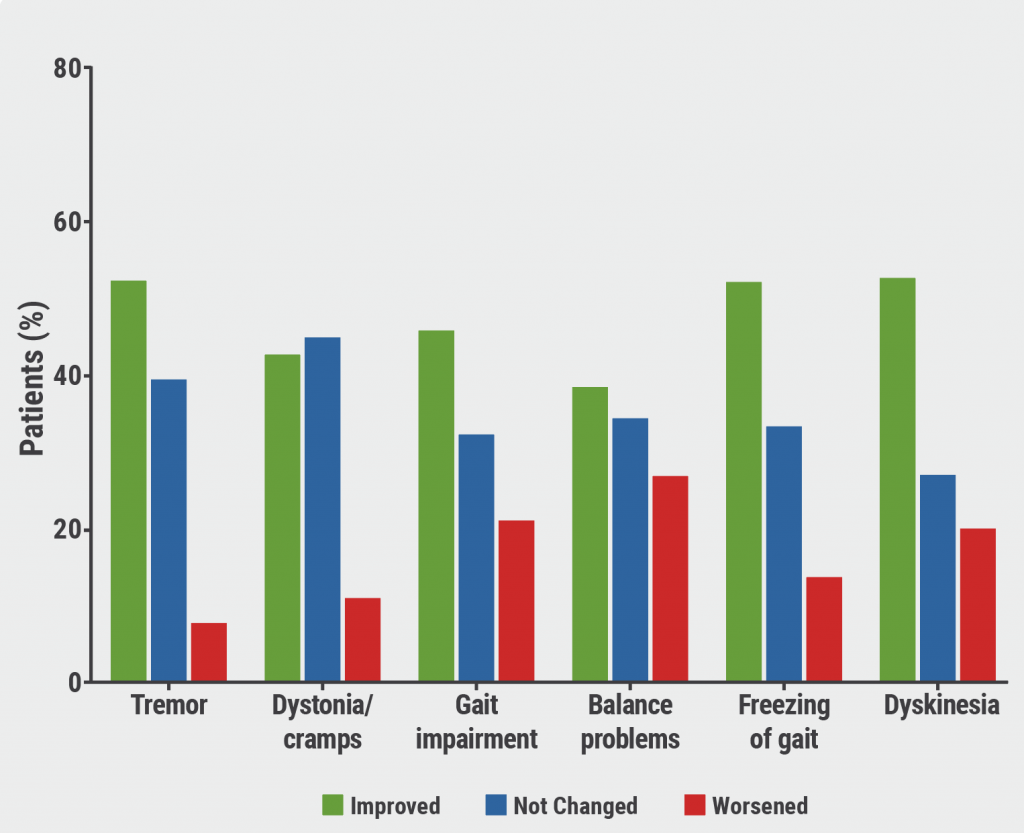Physical and cognitive functions required for typing are affected in MS patients. Dr Ka-Hoo Lam (Amsterdam UMC, the Netherlands) and colleagues studied KD data in people using an app called Neurokeys [1]. The information collected included typing speed features (alphanumeric keys) and processing speed features (backspaces and punctuation marks), based on hold time, release time, or both. The study aimed to verify if KD collected by smartphone could discriminate between MS patients and healthy controls and between MS patients with different levels of disability, as defined by Expanded Disability Status Scale (EDSS) scores.
A logistic regression and random forest algorithm were combined in a model to capture linear and non-linear trends. It was tested in 97 MS patients and 22 healthy controls, from whom 2 weeks of KD were aggregated per hour. MS patients were divided into 2 sub-groups: low disability (EDSS ≤3.5; n=61) and higher disability (EDSS >3.5; n=36). In the low disability group, 44 patients had relapsing-remitting MS, 12 had secondary progressive MS, and 5 had primary progressive MS. In the higher disability group, 14 had relapsing-remitting MS, 17 had secondary progressive MS, and 5 had primary progressive MS.
The best performing model for distinguishing between MS patients and controls had an area under the curve (AUC) of 0.78, indicating good sensitivity and specificity. This model included 2 typing speed features, number of suggestions, age, and gender. Similarly, the AUC for distinguishing between low and higher disability groups was 0.78. This model included 3 typing speed features, a mental processing feature, and age. Both models were primarily driven by KD.
- Lam K, et al. Real-world smartphone keyboard interactions discriminate between different levels of disability in multiple sclerosis. EPR-114, EAN 2021 Virtual Congress, 19–22 June.
Copyright ©2021 Medicom Medical Publishers
Posted on
Previous Article
« Machine-learning method accurately classifies patients with MS Next Article
Rhythmicity in primary headache disorders »
« Machine-learning method accurately classifies patients with MS Next Article
Rhythmicity in primary headache disorders »
Table of Contents: EAN 2021
Featured articles
Letter from the Editor
COVID-19
First evidence of brainstem involvement in COVID-19
Cognitive/behavioural alterations persistent after COVID-19
Neural base of persistent hyposmia after COVID-19
Neurological symptoms and complications of COVID-19 affect outcomes
Cerebrovascular Disease
Intracerebral haemorrhage only slightly increases mortality in COVID-19 patients
Stroke with covert brain infarction indicates high vascular risk
Expanding precision medicine to stroke care
Dexamethasone not indicated for chronic subdural haematoma
Cognitive Impairment and Dementia
Severe outcomes of COVID-19 in patients with dementia
Promising diagnostic accuracy of plasma GFAP
Sex modulates effect of cognitive reserve on subjective cognitive decline
Hypersensitivity to uncertainty in subjective cognitive decline
Epilepsy
Minimally invasive device to detect focal seizure activity
‘Mozart effect’ in epilepsy: why Mozart tops Haydn
Migraine and Headache
Factors associated with decreased migraine attack risk
Pregnant migraine patients at higher risk of complications
Occipital nerve stimulation in drug-resistant cluster headache
Rhythmicity in primary headache disorders
Multiple Sclerosis and NMOSD
Typing behaviour to remotely monitor clinical MS status
Alemtuzumab in treatment-naïve patients with aggressive MS
No higher early MS relapse frequency after stopping ponesimod
Good long-term safety and efficacy of inebilizumab in NMOSD
Neuromuscular Disorders
Inability to recognise disgust as first cognitive symptom of ALS
Pathogenic T-cell signature identified in myasthenia gravis
Parkinson’s Disease
Levodopa-carbidopa intestinal gel in patients with advanced PD
New Frontier – Navigated Transcranial Ultrasound
Exploring the possibilities
Related Articles

August 18, 2021
Levodopa-carbidopa intestinal gel in patients with advanced PD
August 18, 2021
Long-term effectiveness of ANT-DBS in epilepsy confirmed
© 2024 Medicom Medical Publishers. All rights reserved. Terms and Conditions | Privacy Policy

